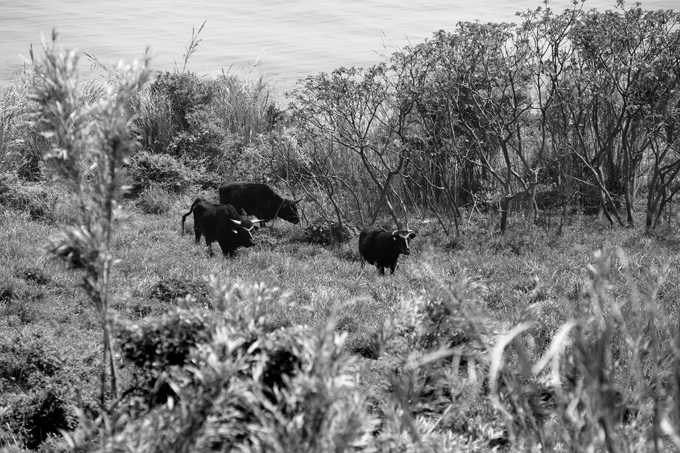Wagyu fans know that only an bovine whose linage comes 100% from one or more of the four Japanese Wagyu breeds can be called a Wagyu. Did you know that even among this highly selective world of Japanese Wagyu, one brand stands out as having the purest bloodline – the Mishima-ushi.
The Mishima-ushi live on a remote island off the coast of Yamaguchi Prefecture in Southwest Japan. Thanks to their isolated location, they have not been interbred with other breeds since the Meiji Era (1868 – 1912). Despite being designated as a national natural treasure by the Japanese government, the Mishima-ushi almost went extinct in 1967 when the population decreased to just over 30. Fortunately, the population had rebounded to around 90 in 2020 thanks to the efforts of a local preservation committee.

Most Mishima-ushi today are used for breeding and preservation purposes. Only seven small farms raise this brand, and no more than 12-13 animals are released per year for meat consumption. While an average black-haired Wagyu produced in Japan today can yield 400- 450Kg of meat, a Mishima-ushi can only yield about 130Kg. If you line up a Mishima-ushi sirloin side by side with an average Wagyu sirloin, the former is only about 1/3 the size of the latter. In terms of the rarity of a food ingredient, Mishima-ushi is hard to beat!
Despite roaming around on the island most of their lives and mating naturally, the Mishima-ushi is marbled from head to toe. This genetic trait is so unique to Wagyu that the researchers at the Tokyo University of Agriculture have sequenced the genome of Mishima-ushi for further research into the Wagyu genetics. The fact that these animals enjoy an open-air buffet of nutrient-rich island grass and a spa of saline ocean breeze also contributes to the intricate marbling and delicate taste.
In Japan, Mishima-ushi have gained a mythical and legendary status (maboroshi in Japanese). Consider yourself one of the luckiest people on earth if you ever get your hands on some of this maboroshi Wagyu!
All images come from Midoriya (http://mishimaushi.com/).

